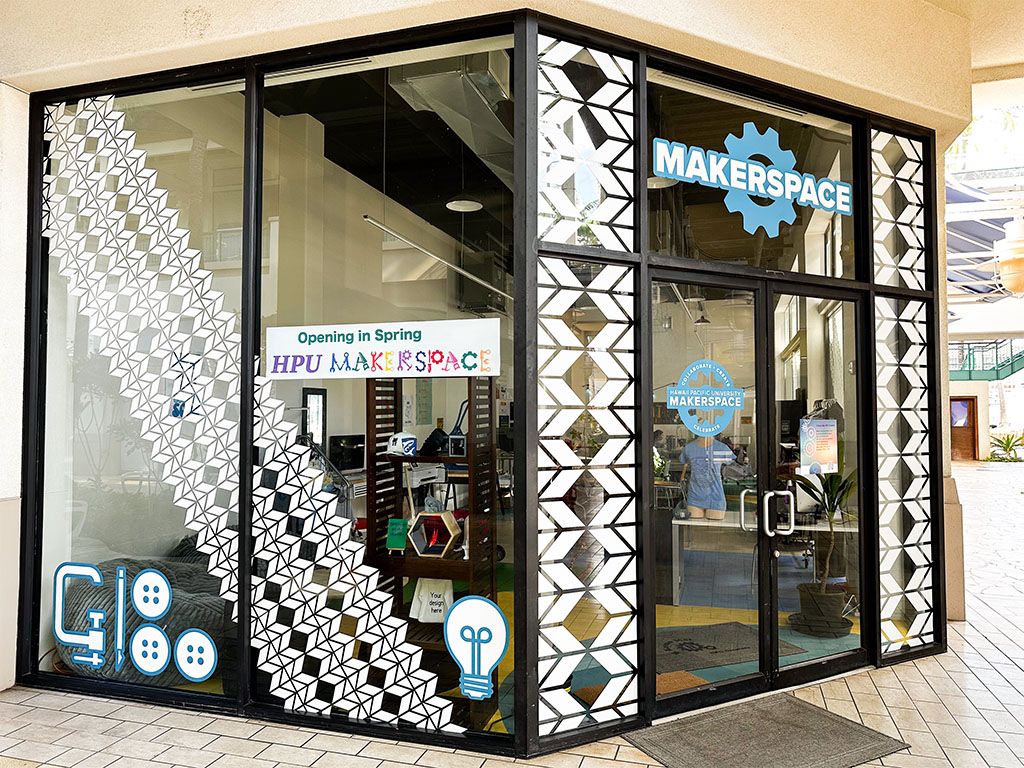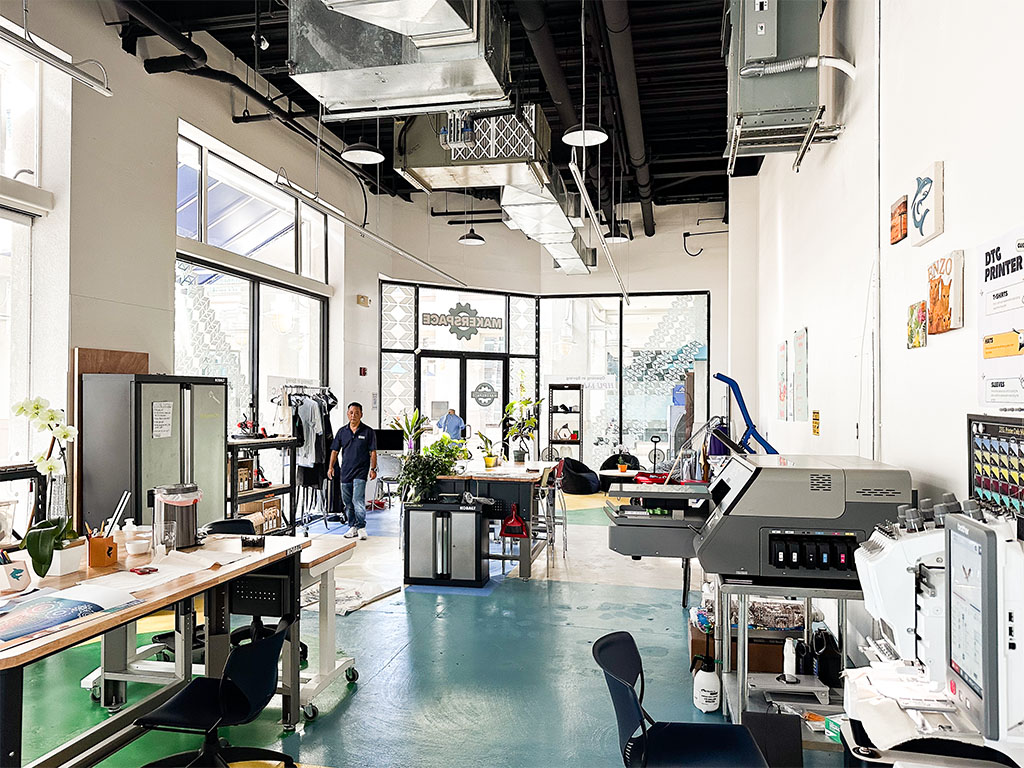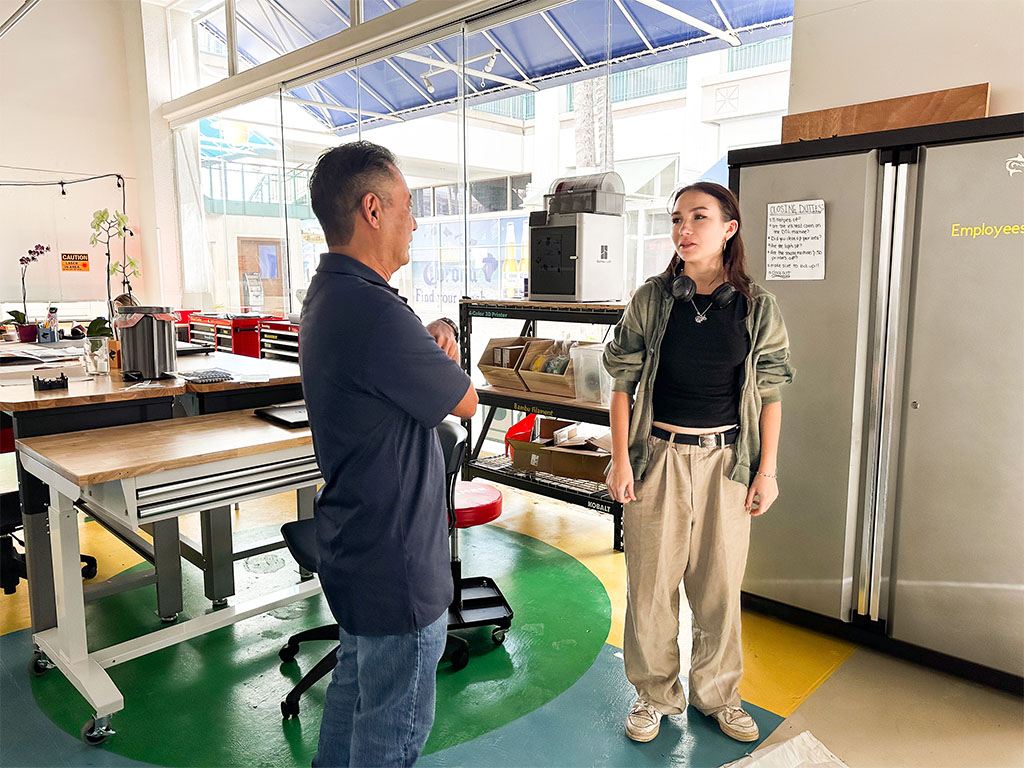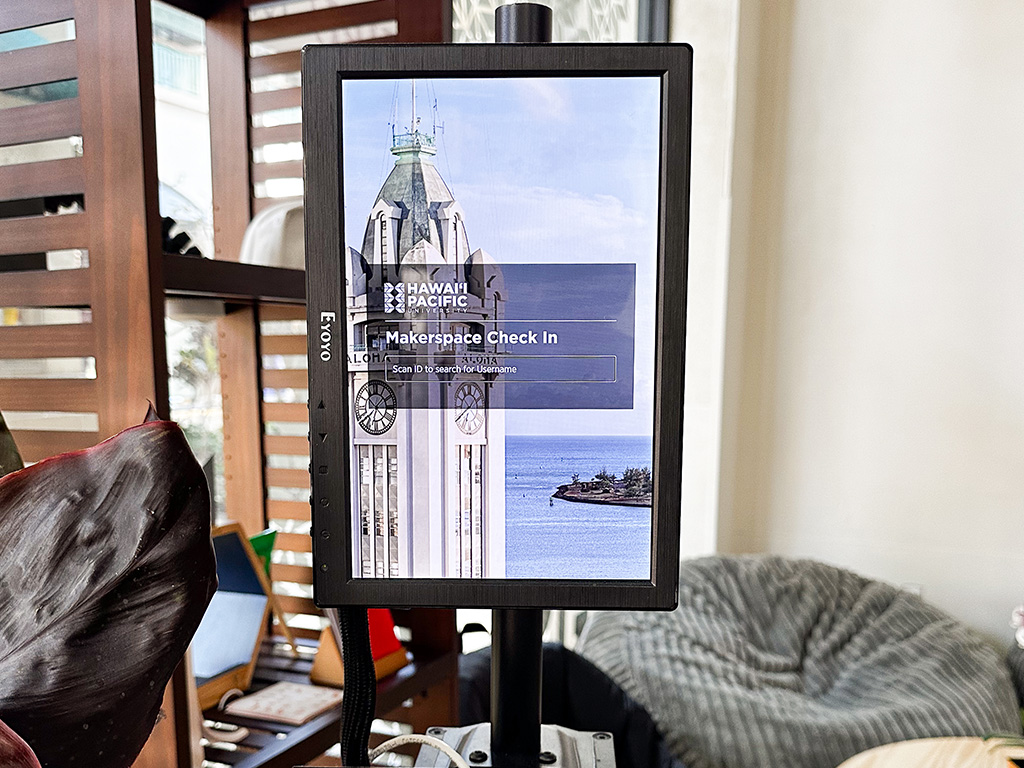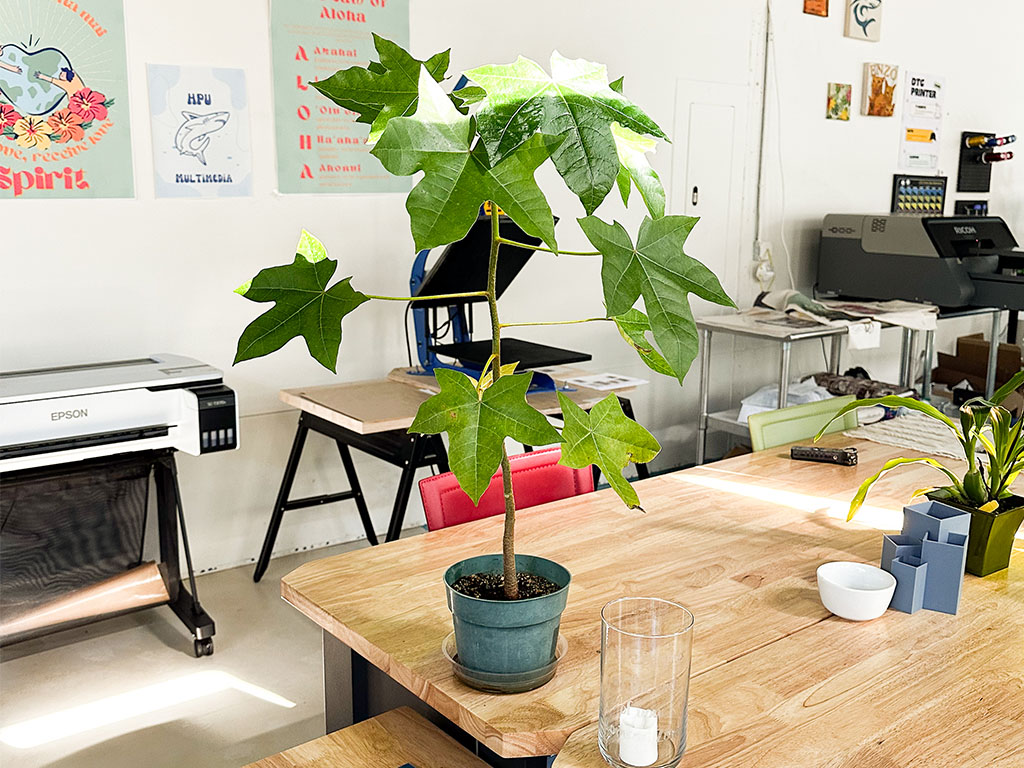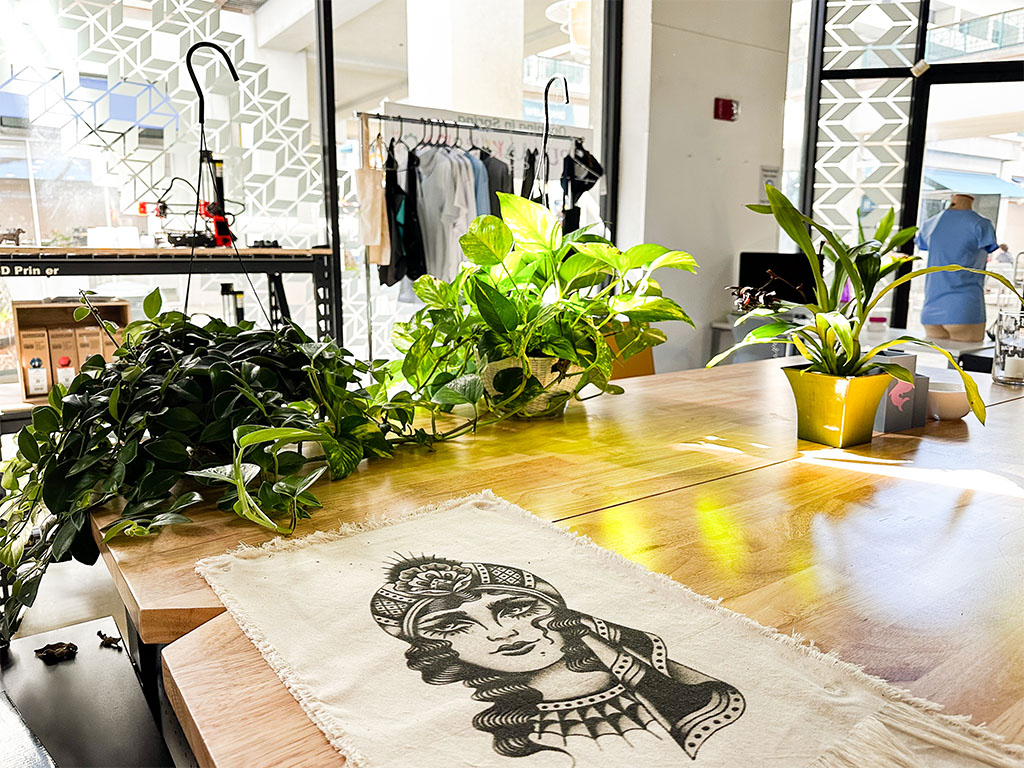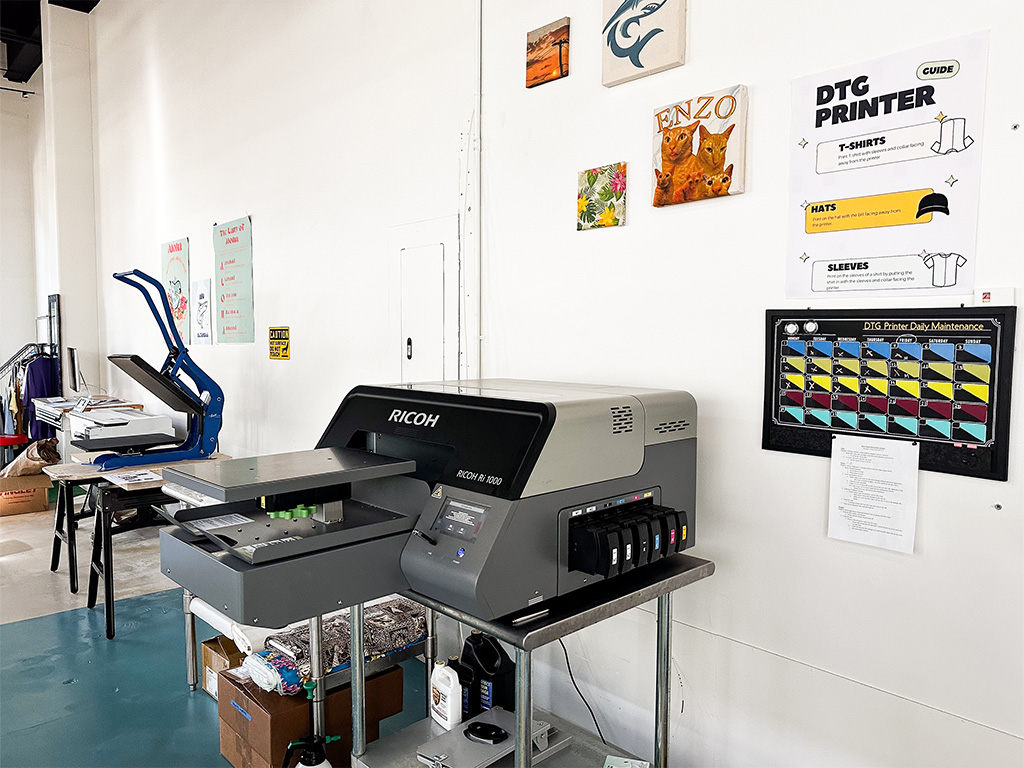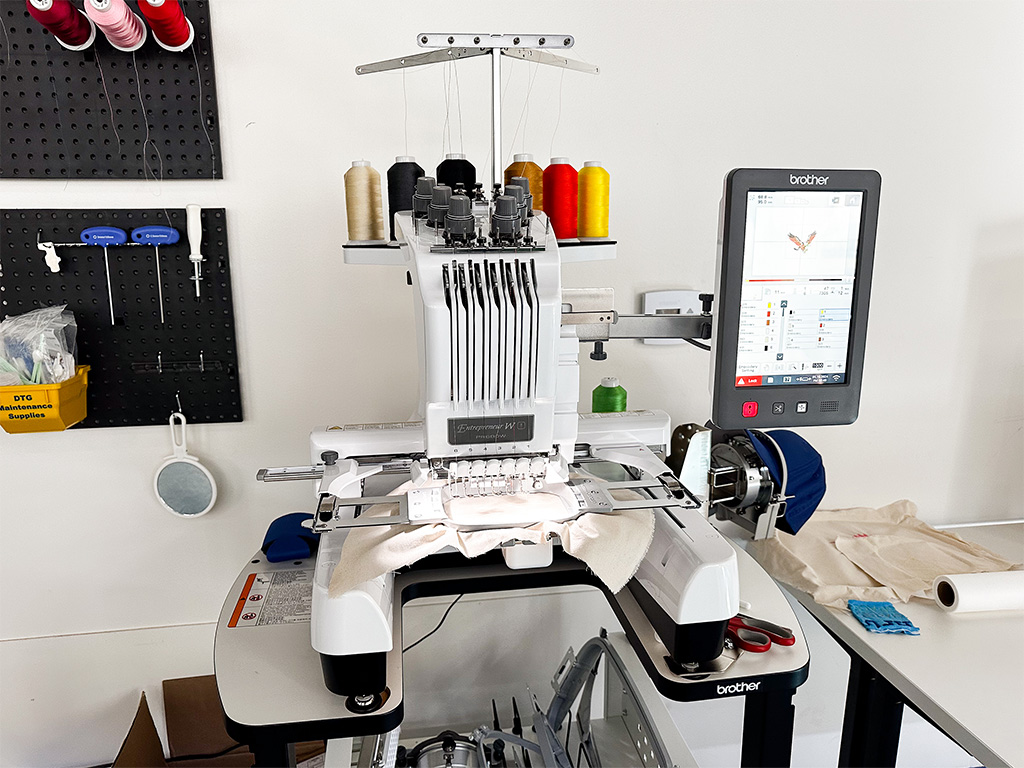This spring, HPU unveiled an innovative maker space at Aloha Tower Marketplace, providing a 900-square-foot interdisciplinary hub for students across all academic majors and backgrounds. This initiative, fueled by an anonymous donation to the University, emphasizes creativity, collaboration, and the intersection of diverse perspectives.
The maker space houses a sophisticated direct-to-garment machine (DTG), embroidery machine, large format printer, vinyl cutter, multi-color 3D printers, sewing machine, various hand tools and a laser cutter and engraver. HPU students will work in the space alongside a staff member. Cultural exhibits and special guest artists are envisioned to incorporate artwork from diverse cultures. A student mural project is also planned for an entire wall in the space.
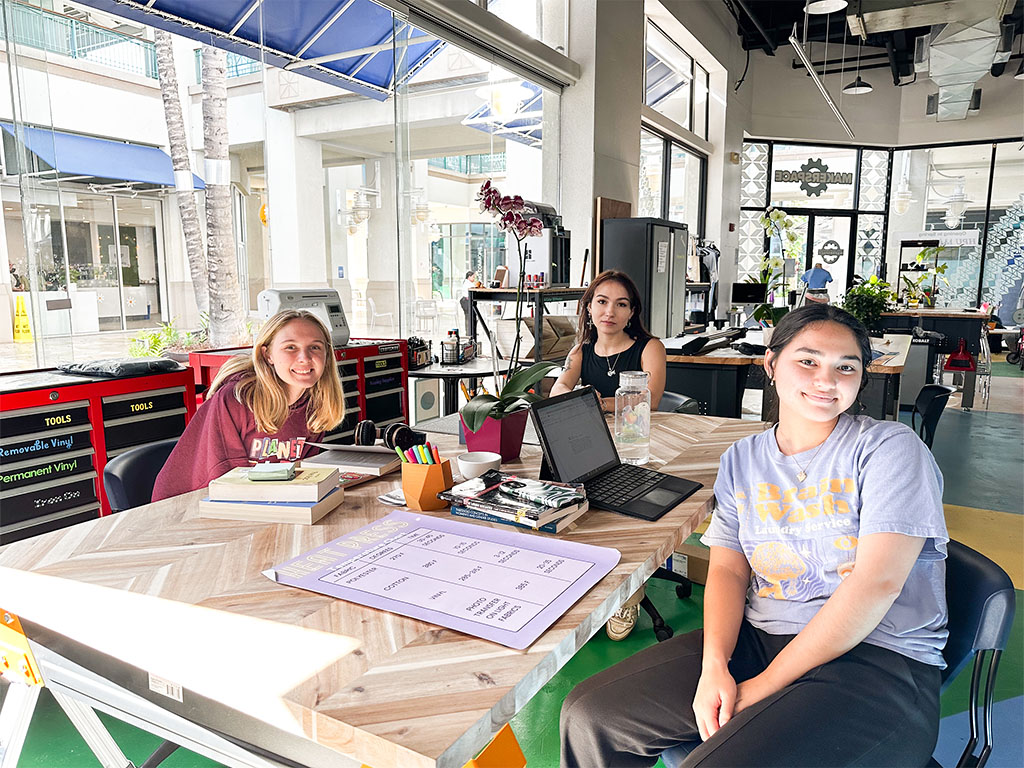
HPU students collaborating in the new maker space at Aloha Tower Marketplace.
“HPU’s maker space is an exemplification of our teaching and learning philosophy to create hands-on, experiential learning opportunities for our students,” HPU President John Gotanda said. “This interdisciplinary space reflects our vision for students from various academic majors to engage in inspiring and culturally relevant projects. It also provides a space for students to be innovative, entrepreneurial, and to work together to bring their ideas to fruition.”
To kickstart the maker space initiative, Gotanda called upon Mark Nitta, HPU's Director of Instructional Technology and Client Services. Nitta's wealth of expertise spans various disciplines, including image processing in darkrooms, silk screen printing, videography, and numerous other relevant technologies. Nitta’s team included student employees and full-time HPU staff members who played an integral part in building the maker space.
“I’ve wanted to help build a maker space at HPU for a number of years, so this was the perfect opportunity to work with President Gotanda on his vision to create our own maker space with a specific niche aimed around culture,” said Nitta.
University maker spaces play a significant role in fostering creativity and innovation, serving as collaborative hubs where students from various disciplines meet to work on projects beyond traditional boundaries. Observing a peer's project in action inspires students to undertake endeavors they might not have considered feasible, fostering friendships, partnerships, and the discovery of shared interests.
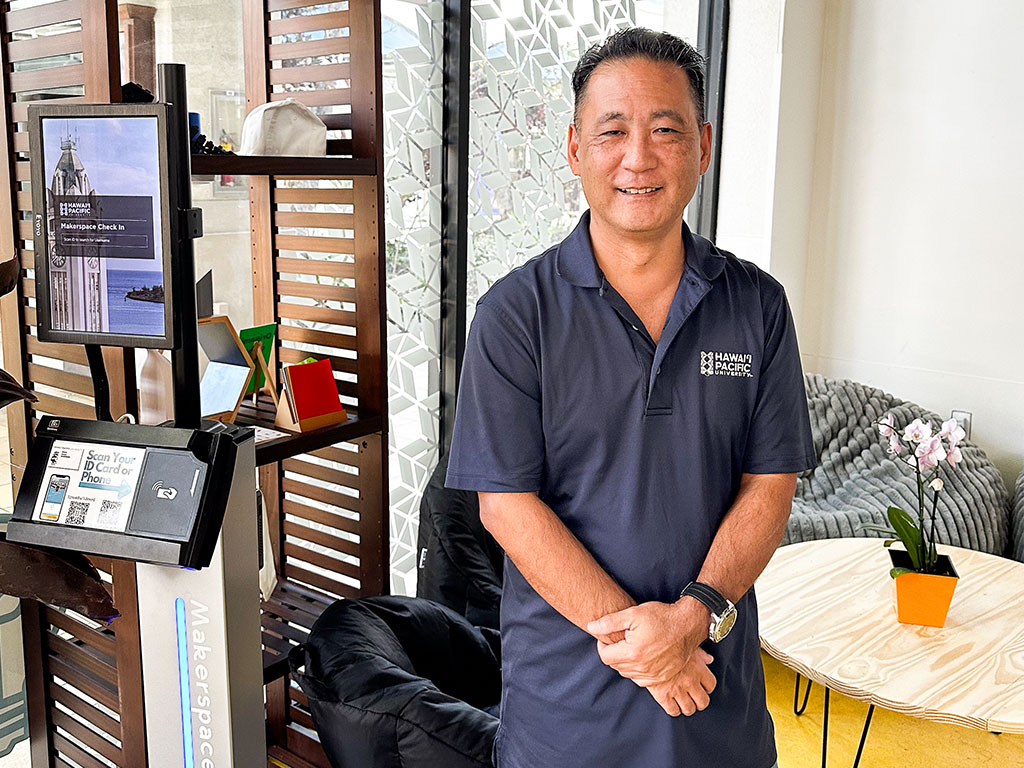
Mark Nitta.
Exploring other maker spaces was key in starting the building process. Nitta traveled to the greater Boston area to engage with students, university leaders, and professors to discern the key factors contributing to their spaces’ successes. His visits to Boston College, Harvard University, Artisan Asylum, and Brandeis University provided insights into the significance and efficacy of their maker spaces.
“The university and community-based maker spaces I visited inspired creativity and inclusiveness. They are open to all students from any degree and background,” noted Nitta. “Our maker space will encourage everyone to create any prototype they want, so long as they follow the rules of the space.”
The process to enter the HPU maker space includes scanning a QR code on a smart device at the door. Safety training and an exam are needed before using the space, and students are held accountable for safety and clean up.
“In my eyes, students are professionals now. I expect a certain standard from the students who use the maker space,” said Nitta. “This will give them experience in the real world. They will be monitoring each other as well. If a student sees a violation, that student needs to call the problem out. They need to be accountable for their tools as well, because this is their space and their tools.”
Another important advantage of a maker space is its positive impact on student retention. Collaborative work within a maker space promotes a sense of community among students, leading to the formation of close bonds, a more robust alumni constituency, and a heightened connection to the university.
“By having places like this on campus it provides students with a chance to enhance their personal and professional growth opportunities,” Nitta said. “I have always believed that those who have experiences in the arts are more likely to become more creative and successful in their careers.”


